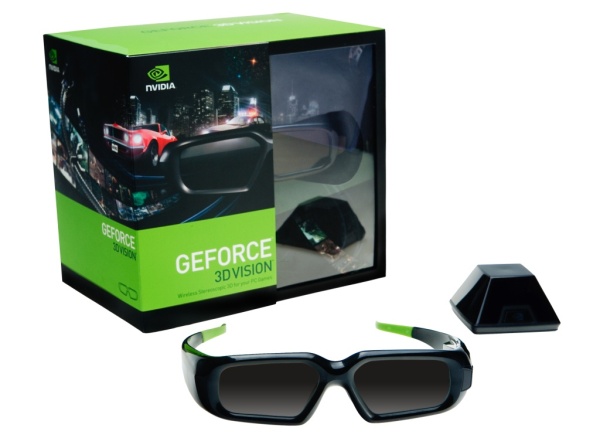Asus VG236H 120Hz 3D Vision LCD Monitor Review
Test System and 3D Vision Kit

Hardware Used: EVGA GTX 480 1.5GB Display:
![]()
Intel Core i7 980X Extreme Edition
Overclocked 4.38GHz
EVGA Classified 760 Motherboard
X58 Express Chipset
6GB OCZ Blade DDR3-1857
(3 X 2GB) 7-8-7-20 1T
Crucial M225 128GB SSD
Firmware 1916
Asus VG236H 120Hz LCD Monitor
Acer GD235HZ 120Hz LCD Monitor
Relevant Software:
Windows 7 Professional 64bit
NVIDIA GeForce Driver Release 258.96
NVIDIA 3D Vision Driver 258.96
Games Used:
Battlefield: Bad Company 2
Dirt 2
S.T.A.L.K.E.R. Call of Pripyat
Just Cause 2
Batman: Arkham Asylum
FarCry2
H.A.W.X.
The NVIDIA GeForce 3D Vision kit consists of rechargeable 3D shutter gasses, an infrared emitter / base station, cables, and software. On the glasses, there's a power button and indicator LED on the top of one side (visible at the upper-right in the image above), and a USB port on the underside. The USB port is used to charge the glasses, which can operate for about 40 hours between charges. 40 hours of use should be plenty for a couple of days of gaming--that is unless you're a marathon gamer that never sleeps.
The GeForce 3D Vision glasses work by blocking the light to alternating eyes in-sync with the frames being displayed on-screen. Each lens is essentially a monochrome LCD display that can be turned on or off. When off, light can pass though; when on, it cannot. This effect allows only certain frames in a game to be viewed by each eye, and each alternating frame is slightly offset, which in turn is perceived by our brains as a 3D image. Much in the same way our eyes actually work in the real world. We should note that the glasses provide better viewing angles and resolution than most passive glasses, through the use of higher-quality optics.
Also, we have the base station / IR emitter. It is used to sync the glasses to whatever is being displayed on screen. The emitter transmits data directly to the wireless shutter glasses, within a 20 foot radius, and also features a real-time 3D depth adjustment dial on its back. This feature is crucial for those that tend to get pseudo-motion sickness using stereoscopic 3D glasses like these. Turning the dial alters the 3D effect, which can help users more easily get acclimated to wearing the glasses.







